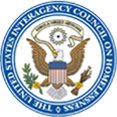Getting Started: Establishment and Organization of a State ICH & Successful Practices
Establishment
A State Interagency Council on Homelessness can be established in one of three ways:
1. Executive Order of the Governor
2. Executive Order and Legislative Action
3. Legislative Action
The most common vehicle of creation is an Executive Order that identifies membership, meeting frequency, functions, and timeframe. For an example Executive Order, please read former Governor of Arizona Janet Napolitano's Executive Order creating the Governor's Interagency and Community Council on Homelessness.
Organization
There are three alternative models for organizing a State Interagency Council:
1. State Officials and Stakeholders meet as a combined group (recommended model)
2. State Officials and Advisory Group of Stakeholders meet separately
3. State Officials meet only
Chairs, Terms, Meetings
- Chair or Co-chairs appointed by the Governor - or alternately - Chair or Co-chairs elected within the Council.
- Terms of the Chair or Co-chairs are set by Executive or Legislative Order or may be determined by the Council.
- Terms for members are also set by Executive or Legislative Order or determined by the Council and are generally between 1 and 5 years, with many Councils offering up to 3 consecutive terms.
- Meeting frequency can vary from quarterly to monthly.
Characteristics of a Successful State Interagency Council
- Governor or Legislature initiated
- Active participation of Governor’s Office
- Chaired/Co-chaired by Lt. Governor or Governor’s Appointees (Secretaries, Commissioners or Directors)
- Council representation maintained at the State Secretary or Deputy Secretary level
- Senior Staff dedicated to overseeing and implementing Council activities
- Membership is represented by the core State Agencies:
•Housing,
•Welfare,
•Human Services,
•Corrections,
•Labor/Economic Development,
•Education and Finance.
- Council activities are performance-based and results-oriented with measurable outcomes that are periodically reviewed and documented in written reports
- Council is transparent and meetings are open to public.
- All stakeholders gain a say in the process of creating a statewide plan and the accompanied action steps
- Member Legislators are champions of the plan, strategy, and resources needed for homelessness initiatives in the Legislature
- Enhanced coordination with local community planning processes
- Promotion of fiscal responsibility and enhanced efficiency with identification and elimination of duplicative programs and costs
- Credible documentation of research-driven, measurable outcomes is available for future funding requests
- Greater buy-in for elements of the strategy through expansive stakeholder involvement, including supported housing, discharge planning, and assertive engagement initiatives
- Federal Partners are engaged in joint discussions with the Council
-
Membership or an Advisory Board to the State ICH includes community stakeholders and interested parties



































